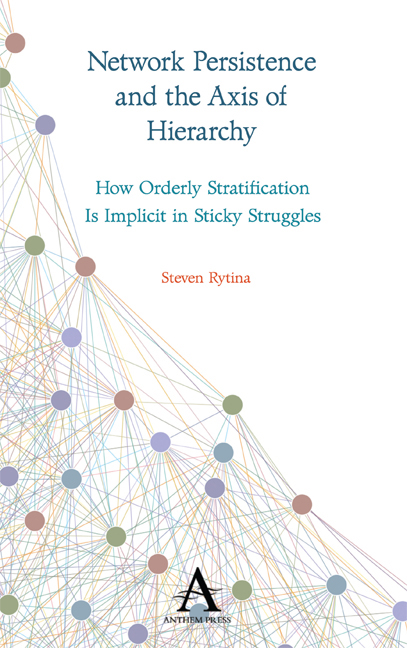 Network Persistence and the Axis of Hierarchy
Network Persistence and the Axis of Hierarchy Book contents
- Frontmatter
- Contents
- List of Illustrations
- Preface
- Chapter One Sticky Struggles: The Unified Pattern of Social Ranks Inherent in Networks
- Chapter Two Foundations of Cacophony
- Chapter Three Knots of Regularity
- Chapter Four Hierarchy: Inevitable but Inevitably Messy
- Chapter Five The Inevitable Emergence of Stratification
- Chapter Six Scaling Intergenerational Continuity: Is Occupational Inheritance Ascriptive After All?
- Chapter Seven Taming the Mobility Table
- Chapter Eight Is Occupational Mobility Declining in the United States?
- Chapter Nine The Continuum of Class over Time: Deconstructing Imposed Class to Uncover Empirical Classes
- Chapter Ten Concluding Reflections
- Appendix Why Robust Attraction Is (Effectively) Inevitable for Mobility Data
- Index
Chapter Two - Foundations of Cacophony
Published online by Cambridge University Press: 30 April 2020
- Frontmatter
- Contents
- List of Illustrations
- Preface
- Chapter One Sticky Struggles: The Unified Pattern of Social Ranks Inherent in Networks
- Chapter Two Foundations of Cacophony
- Chapter Three Knots of Regularity
- Chapter Four Hierarchy: Inevitable but Inevitably Messy
- Chapter Five The Inevitable Emergence of Stratification
- Chapter Six Scaling Intergenerational Continuity: Is Occupational Inheritance Ascriptive After All?
- Chapter Seven Taming the Mobility Table
- Chapter Eight Is Occupational Mobility Declining in the United States?
- Chapter Nine The Continuum of Class over Time: Deconstructing Imposed Class to Uncover Empirical Classes
- Chapter Ten Concluding Reflections
- Appendix Why Robust Attraction Is (Effectively) Inevitable for Mobility Data
- Index
Summary
A key dilemma is easy to state but hard to resolve. Occupational mobility is a derivative concept— any definition logically turns on earlier definitions of other terms. Mobility— change in position— has no definite content until some grid is spelled out. Occupations have to be mapped onto some backdrop of locations and distances. Every possible matter of fact, from tiny details to broad generalizations, turns on what the grid is taken to be. But occupation does not come with ready- made answers to any of the key questions. What counts as location, relative position, or distance? Where do values or numbers come from?
One, quick, slightly cynical answer is: from on high. To get to ranks or categories from occupations requires a leap of faith. (This applies equally to “class” distinctions that are recodes of occupation.) As Breen and Rottman (1995, 458) point out, “That an association exists between class positions and various outcomes is, as we have already noted, very well attested […] [but] when we turn to the specification of the exact mechanism by which class position is linked to any of these outcomes, there is rather less ground for optimism.” No matter whether occupations are taken “as an indicator of class position rather than of prestige or of socio- economic status” (Goldthorpe, Llewellyn, and Payne 1980, 29) or as roles occupying statuses (Featherman and Hauser 1978, 19), no one yet has offered any account or mechanism through which occupations give rise to a map or distances or what have you. And while I shall, in due time, try to give an account of how ranks for occupations are an emergent regularity, this will require reframing the subject.
This reframing begins by taking seriously the reasons for acceptance of the inevitability of impasse that I earlier labeled “cacophony.” Leading contributors to the study of occupational mobility have settled into an “agreement to disagree.” Under the terms of this mutual standoff, mobility can only be addressed by adopting one or another stances. These are taken to be mutually exclusive. Differences are said to be theory-grounded. This conventional wisdom holds that to study mobility, one must first opt for some coding convention and for whatever theoretical preamble justifies it.
Cacophony then holds across different research traditions. The particularities, the governing conventions, for coding, aggregating, and ranking are, on their face, empirically consequential.
- Type
- Chapter
- Information
- Network Persistence and the Axis of HierarchyHow Orderly Stratification Is Implicit in Sticky Struggles, pp. 19 - 50Publisher: Anthem PressPrint publication year: 2020


